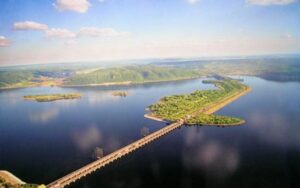SHARE WITH FRIENDS:
If you suddenly turn off the light while watching TV, your mood will be dim. You start waiting impatiently for it to burn.
Most appliances today run on electricity. It is impossible to imagine a developing world without it.
Electricity generation requires a lot of money and natural conditions.
Hydroelectric power plants - Hydropower plants are the most common power plants, a set of structures and equipment that convert water energy into electricity. They are often built on rivers, dams and reservoirs. The efficiency of electricity generation depends on two factors: the hydropower plant must have an uninterrupted water supply throughout the year and be located on a slope.
HPPs have many advantages and disadvantages. For example, the cost of electricity generated is low, and the environmental damage is less than other power plants. The disadvantage is that the reservoirs cover a large area and the construction of hydropower plants is relatively expensive. However, there is one unique advantage over any power plant - HPPs run on renewable energy. For example, the source of thermal power plants (coal, fuel) may run out one day. However, the water used in hydropower plants is naturally re-collected every year.
The way hydropower plants work is very simple. Hydraulic equipment delivers water at a certain pressure. This water hits the blades in special pipes and drives the generators. The result is electricity.
The water pressure is created by raising the water level by means of a dam or by means of special slope-channels (derivation method). Sometimes both methods can be used at the same time.
According to recent estimates, hydropower supplies 63 percent of the world's electricity. Norway, Iceland and Canada have the highest per capita electricity generation. China is joining them. This is because large-scale construction of hydropower plants began in this country in 2000. China now owns almost half of the world's small hydropower plants.
Electrification in Uzbekistan began in the second quarter of the twentieth century. Currently, there are several power plants, such as Chirchik, Charvak, Farhod, Bozsuv, Solor, Samarkand, Topalang.
There is a saying among our people: "Protect from the scourge of fire, from the scourge of water." Hydroelectric power plants convert water energy into electricity, in other words, "water into fire." Accidents and fires can occur due to negligence or failure to repair a faulty device in a timely manner. They become a real disaster, a real disaster. The more money is wasted, the more nature is lost, the more businesses and offices shut down, the more the economy suffers. Such major accidents can also occur due to a little carelessness.
Major accidents in the recent past:
-
October 1963, 9 - A major hydraulic accident occurred at the Vayont Dam in northern Italy.
-
September 2007, 12 - A fire broke out in one of the transformers of the Novosibirsk HPP.
-
August 2009, 3 - A fire broke out in the transformer of Bureya HPP due to the voltage in the 200 kV distribution device.
-
August 2009, 16 - A fire broke out at the Bratsk hydroelectric power station, one of the largest power plants in Russia.
-
August 2009, 17 - There was a big accident at the Sayano-Shushensk HPP. This HPP is the most powerful power plant in Russia.
